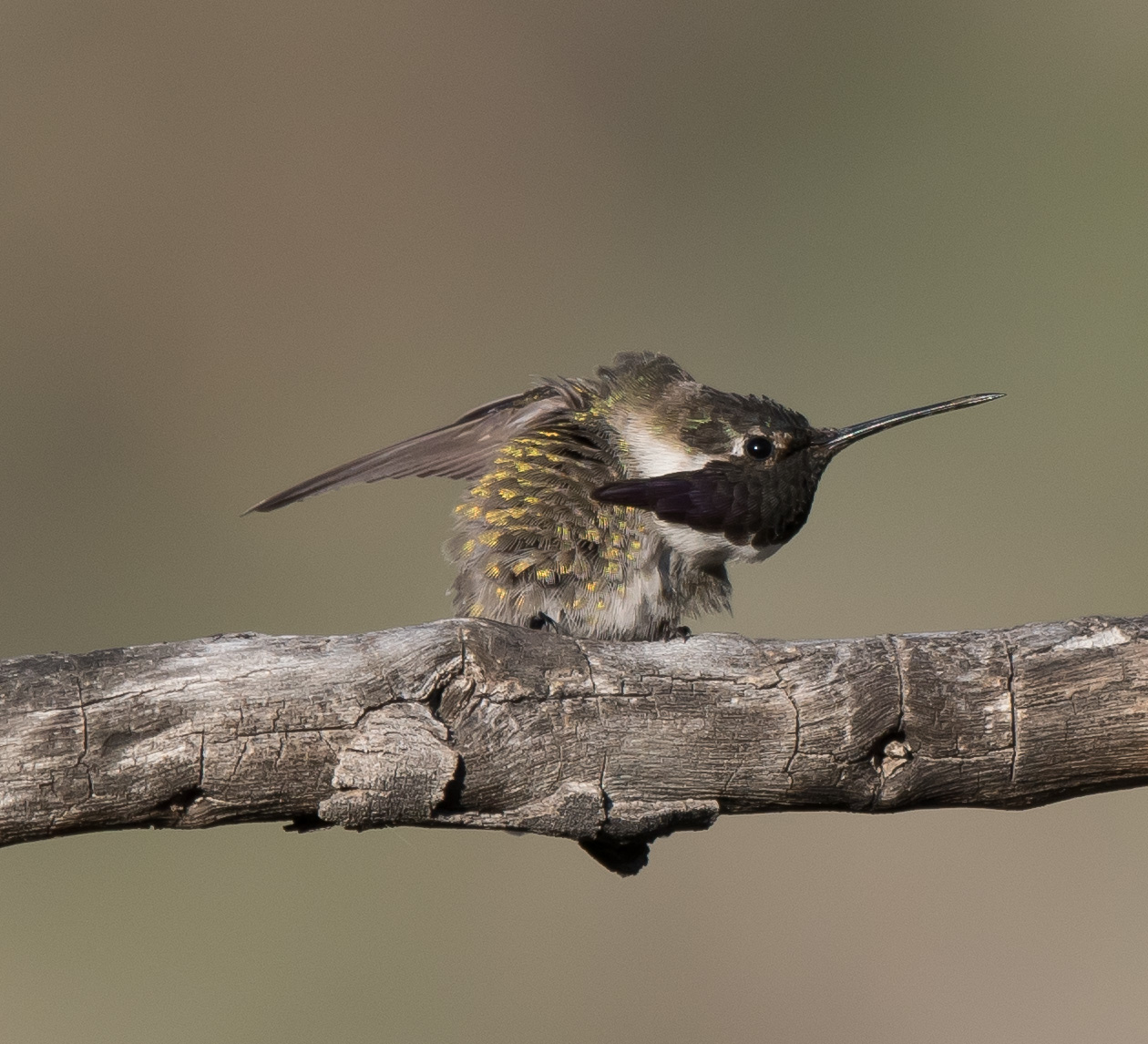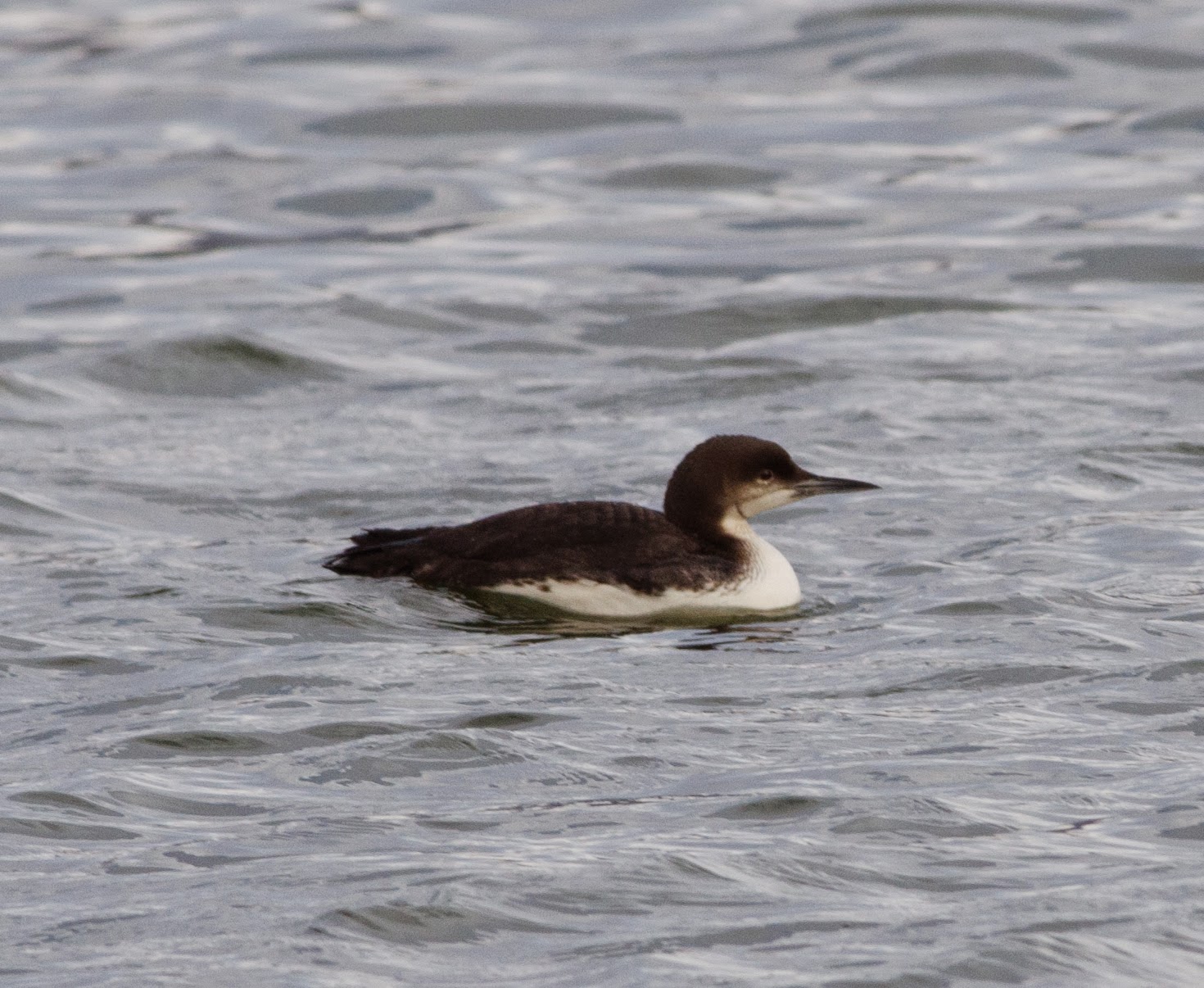On Sunday, February 22, 2015, Muriel Neddermeyer and I headed down to southeastern Arizona to search for a few rarities and along the way, we picked up Chris Rohrer in Tucson and began our quest. Muriel had checked the forecast and found that the weather was not going to be the best for birding with some strong and gusty winds. We decided to go for it anyway as staying at home would produce 'nothing'! Our first stop was Huachuca Canyon to try for the Sinaloa Wren that has been there for some time. We had mixed success with this bird. Chris saw it briefly and called us to his location where we did not see it again. A short time later, we heard it give its infamous ratchet call, but once again it did not present itself. We finally left there feeling a bit unfulfilled; but there will be another time.
We then headed west towards the grasslands of Sonoita and Elgin where a Rough-legged Hawk had been reported recently. This area is where the strong gusty winds made for some difficult birding. With no wind breaks in sight, even the birds were having a difficult time. The raptors were almost non-existent, except for a couple far off in the distance. But the smaller grassland birds helped to make up for the miss on the RLHA. Vesper Sparrows were fairly common, but did not flush from the grasses too often, except for one that landed on a fence near a vineyard and was desperately hanging on to avoid getting blown off the wire.
Vesper Sparrow
We also observed several flocks of Chestnut-collared Longspurs. These birds will burst out of some tall dried grass with no warning and circle around and eventually all land back in another spot of tall dry grass. Once they are in the grass, they are almost impossible to find. But I somehow had a bit of fortune on this day as one of them landed on a post within camera range. This a male just starting to molt into its summer plumage.
Chestnut-collared Longspurs
Chestnut-collared Longspur
Also in the grasslands, we found a mangy looking Coyote and a very impressive herd of Pronghorn.
From here we moved on to our last target bird the Yellow-throated Warbler that has spent the winter on the main street common of the small town of Patagonia. We quickly spied a male Hepatic Tanager in a pine tree. Even this species is a bit on the uncommon side at this time of the year. Not too long after that we all caught sight of a bird or two that flew in and Chris and Muriel were quick to see that a female Hepatic Tanager had also arrived in the tree. Interestingly, I had noticed a much smaller bird flit in, but was having trouble re-finding it. But with a little perseverance, I finally located it again and there was our target bird the Yellow-throated Warbler. We then followed this bird around the tree as it foraged higher up in the limbs of the pine. At times it seemed to disappear and then one of us would relocate it again. We were even able to assist a couple of other people that arrived locate it as well. This bird is fairly rare for Arizona as it is a bird that breeds in the eastern part of the United States. Success! Another new life bird! Adding new life birds in Arizona is getting more difficult for me as most of the common birds have been documented. I have to rely on some of the rarities these days to add new species.
Yellow-throated Warbler
Yellow-throated Warbler
Yellow-throated Warbler
Yellow-throated Warbler
And just for good measure, here are the male and female Hepatic Tanagers.
Hepatic Tanager - male
Hepatic Tanager - female
Finally we departed back for Tucson to drop off Chris and Muriel and I headed back to the Phoenix area. But we did make one short stop at Amado Pond to check up on the Pacific Loon that has spent most of the winter in this location. Surprisingly small pond for this bird, but it appears healthy suggesting there are plenty of fish in the pond for feeding.
Pacific Loon
Pacific Loon
The wind definitely played a part in some of our success, but in some cases, some of the birds hunkered down a bit more and it added to some of our success. Cannot complain about a little wind compared to some ugly weather in other parts of the US right now.


























































